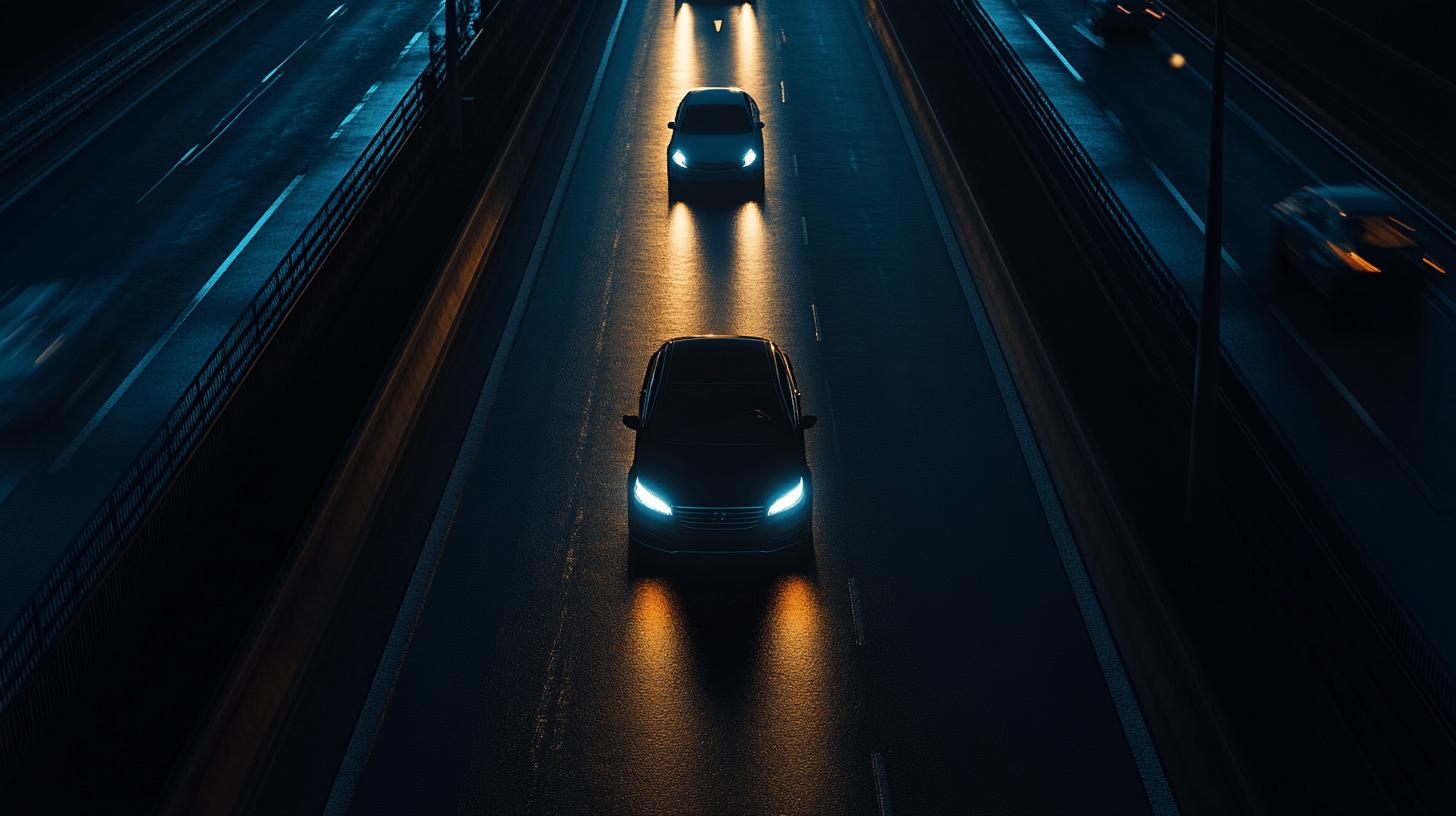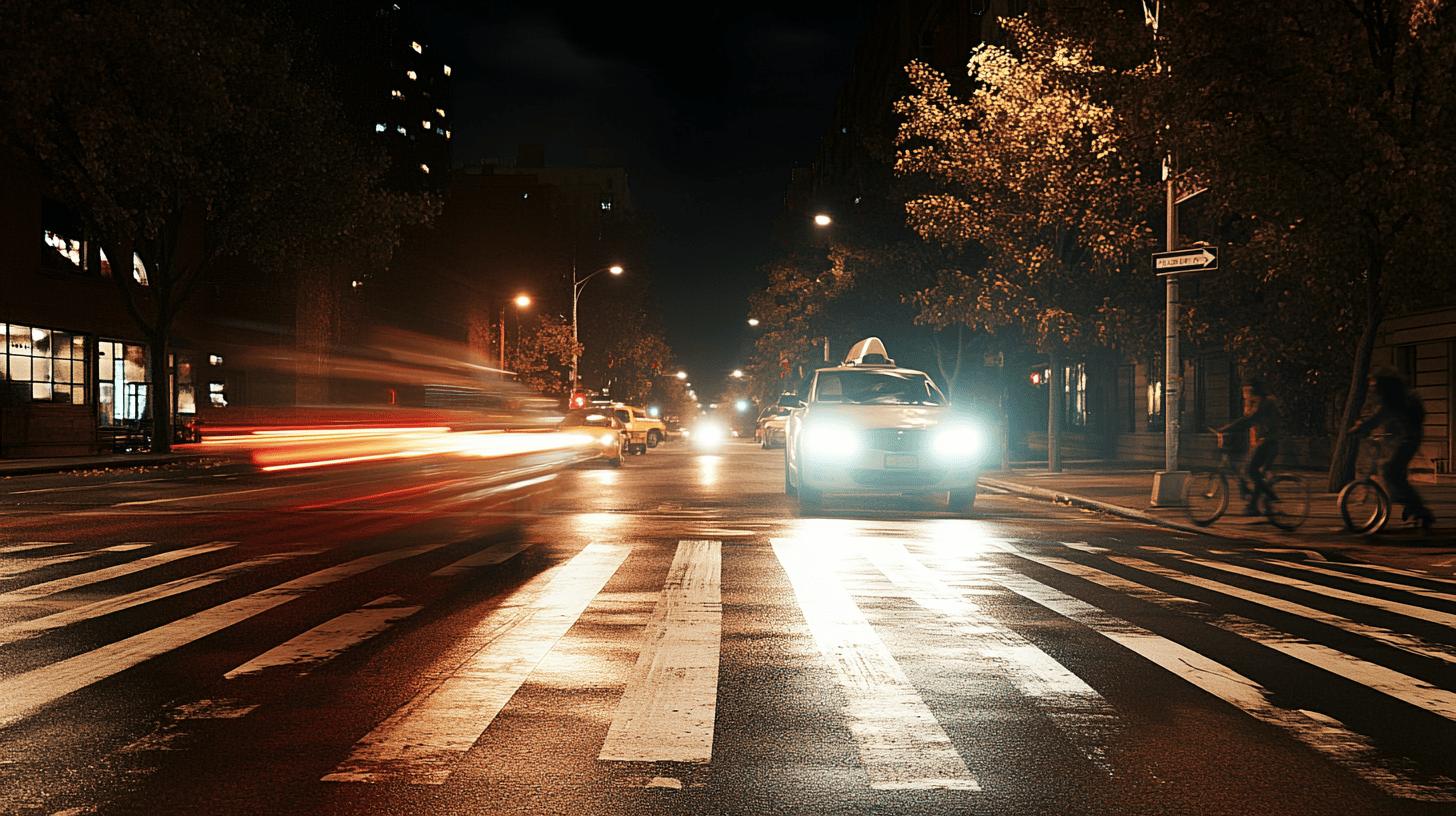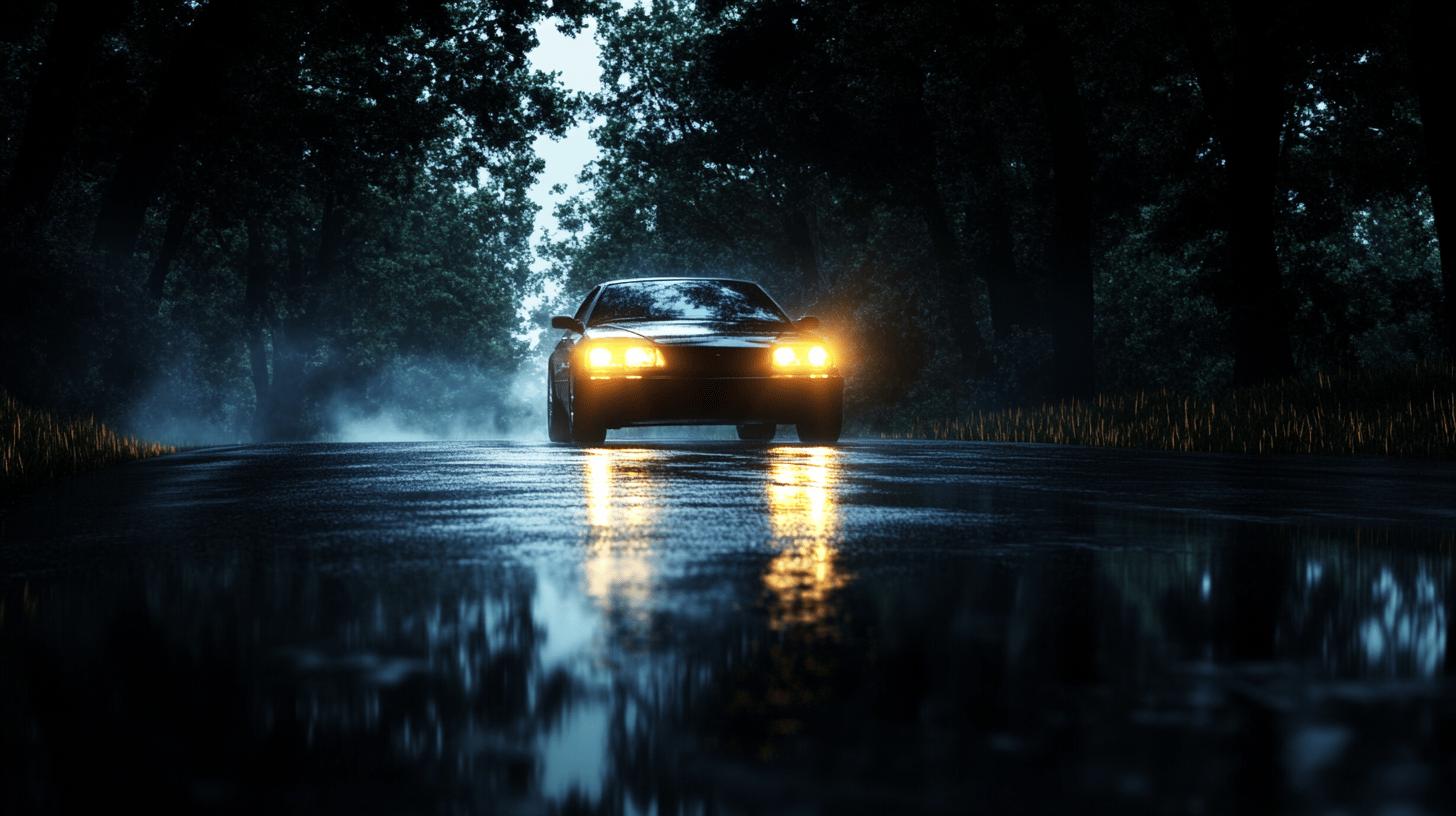Did you know that night-time driving is significantly more dangerous than daytime driving? The stark reality is that reduced visibility, fatigue, and increased encounters with unexpected hazards contribute to a 60% higher risk of accidents at night. Yet, by adjusting a few simple driving habits, you can navigate the darkness with greater safety. This article covers top tips for driving safely in the dark, from maintaining your headlights to managing fatigue. Whether you’re an avid road tripper or a daily commuter, these strategies will help ensure you drive safely and confidently after dusk.
Adjusting Headlights for Optimal Visibility
Headlights play a crucial role in ensuring safety during night driving by illuminating the road ahead and making the vehicle visible to others. Proper headlight usage is essential for maintaining optimal visibility, especially on unlit roads. High beams can be utilised to improve sight in dark areas, but it is critical to switch to low beams when approaching other vehicles to avoid dazzling oncoming drivers. Regularly checking and adjusting your headlights can significantly enhance safety and reduce the risk of accidents.
- Check that all vehicle lights, including headlights, are functioning correctly before setting off.
- Clean the headlight lenses regularly to remove dirt and grime that can dim the light output.
- Adjust the alignment of headlights to ensure the light beam is not misdirected.
- Replace any burnt-out or dim bulbs promptly to maintain full visibility.
- Consider upgrading to brighter bulbs for improved night vision.
Driving with faulty headlights is not only dangerous but also illegal, as it increases the risk of accidents due to reduced visibility. Misaligned or dim lights can fail to illuminate the road properly, making it difficult to spot obstacles or hazards. In addition, faulty headlights can lead to penalties or fines under road safety regulations. Ensuring that all vehicle lights are in perfect working order is a simple yet effective step to enhance safety during night-time driving.
Reducing Glare and Avoiding Dazzle
Glare from oncoming headlights is a common problem that can lead to temporary night blindness, significantly compromising safety. This dazzle effect makes it difficult for drivers to see the road ahead, increasing the risk of accidents. The intense light from other vehicles can disrupt a driver’s line of sight, causing them to lose focus and react slowly to unexpected hazards. Therefore, it is essential to adopt measures that minimise the impact of glare and ensure clear vision while driving at night.
To reduce glare and avoid temporary blindness, drivers should focus on the left-hand side of the road, following the white lines to maintain their line of sight. This practice helps in keeping attention away from the bright lights of oncoming traffic. Additionally, adjusting the rear-view mirror to its night setting can help reduce the reflection of headlights from vehicles behind. It is also advisable to keep a clean windscreen, as dirt and streaks can exacerbate glare by scattering light. By employing these strategies, drivers can maintain better visibility and enhance safety during night-time travel.
Managing Speed and Distance in the Dark

Night driving presents unique challenges primarily due to reduced visibility and altered road conditions. The absence of daylight can obscure obstacles, making it harder to judge distances and react promptly to sudden changes. Additionally, night-time can affect a driver’s perception, leading to slower response times. Despite lower traffic volumes, these factors contribute to increased risks, necessitating careful attention to both speed and vehicle spacing.
Reducing speed is crucial when driving in the dark. Lower speeds allow for better control of the vehicle and provide more time to react to unforeseen hazards. Driving slower helps compensate for poor visibility and ensures a safer stopping distance. It is important to resist the urge to drive quickly, even if the roads seem clear, as unexpected obstacles or changes in road conditions can arise suddenly and require immediate attention.
Maintaining a safe distance between vehicles is equally important. Increasing the following distance allows for greater reaction time and helps avoid collisions in the event of sudden braking by the vehicle ahead. A larger gap also ensures that the headlights of other cars do not impair visibility, reducing the likelihood of accidents. By adjusting speed and maintaining appropriate spacing, drivers can significantly enhance safety during night-time travel.
Enhancing Alertness and Reducing Fatigue
Fatigue is more prevalent at night due to the human body’s natural circadian rhythms, which are programmed for wakefulness during daylight hours and rest after dark. As the evening progresses, the likelihood of drowsiness increases, impacting a driver’s concentration and reaction times. This biological tendency to feel sleepy at night can lead to impaired judgement, making night driving inherently riskier.
Driving while fatigued is a significant danger, with statistics showing that 20% of serious accidents on major UK roads are linked to tiredness. Fatigue can be as hazardous as driving under the influence, affecting decision-making abilities and slowing response times. This highlights the critical importance of recognising the signs of tiredness and addressing fatigue proactively to enhance safety.
- Take regular breaks during long drives to rest and refresh.
- Avoid heavy meals before driving, as they can increase drowsiness.
- Keep hydrated with water or non-caffeinated drinks.
- Share driving responsibilities on long journeys, if possible.
Being well-rested before embarking on a night drive is essential. Ensuring adequate sleep beforehand helps maintain alertness and reduces the risk of tiredness-induced errors while on the road. By prioritising rest and implementing fatigue management strategies, drivers can significantly improve their safety and the safety of others during night-time travel.
Ensuring Clean and Clear Windows
Clean windows and mirrors are crucial for safe night driving, as they significantly enhance visibility and help prevent glare from oncoming headlights. Dirty windows can scatter light, creating distractions and reducing the effectiveness of your vehicle’s lights, regardless of their alignment. Ensuring that your windscreen and windows are free from dirt, grime, rain droplets, and frost is an essential step in maintaining optimal visibility on the road. Regular cleaning not only aids in avoiding unnecessary glare but also allows you to spot obstacles and hazards more easily in dim lighting conditions.
- Wipe down windows and mirrors with a soft cloth and a suitable cleaning solution before driving.
- Remove any frost or condensation using a scraper or de-icer.
- Regularly inspect wiper blades to ensure they effectively clear the windscreen.
By keeping windows clean, drivers can significantly reduce glare from streetlights and other vehicles, improving overall road safety. Clear windows allow for better visual acuity and more accurate judgement of distances, particularly in challenging lighting conditions. Moreover, maintaining clean windows helps in focusing solely on the road ahead without the distraction of streaks or smudges. Properly adjusted interior lights also contribute by reducing reflections on the glass surfaces, helping drivers maintain a clear and unobstructed view while navigating the roads at night.
Navigating Nighttime Hazards

Driving at night introduces several hazards that require careful navigation to ensure safety. Reduced visibility is the primary challenge, making it difficult to see obstacles and judge distances accurately. Darkness affects depth perception and peripheral vision, increasing the risk of accidents. Additionally, the glare from streetlights and headlights of other vehicles can further obscure vision, complicating the task of identifying and responding to potential hazards on the road. Drivers must be extra cautious and attentive to mitigate these risks.
Among the specific hazards encountered during night driving are pedestrians, cyclists, and animals. These vulnerable road users are particularly challenging to spot in poorly lit areas. Pedestrians, especially those wearing dark clothing, can blend into the surroundings, increasing the likelihood of accidents. Similarly, cyclists without proper lighting or reflective gear can be difficult to detect until it’s too late. Animals, too, may suddenly appear on the road, particularly in rural or wooded areas, posing a significant danger to both themselves and drivers.
To effectively navigate these hazards, drivers should adopt strategies that enhance their ability to spot and respond to potential dangers. Slowing down and maintaining a safe distance from other vehicles can provide more time to react. Using high beams when appropriate can improve visibility, but should be switched to low beams when approaching other vehicles to avoid blinding them. Additionally, keeping a vigilant eye on the road’s edges and being prepared to stop or swerve if necessary can help in avoiding collisions with pedestrians, cyclists, and animals.
Final Words
Mastering the art of night driving requires attention to several crucial aspects.
From adjusting headlights for optimal visibility, reducing glare, and managing speed to enhancing alertness and ensuring clear windows–each plays a vital role.
With these top tips for driving safely in the dark, drivers can significantly reduce risks associated with nighttime travel. By implementing these strategies, safe, confident, and enjoyable night driving is within reach.
Stay mindful, adopt these practices, and drive securely under the stars.
FAQ
Q: Why is it difficult to see when driving at night?
A: Driving at night is challenging due to reduced light and increased glare, which can impair visibility and reaction times. Properly adjusted headlights and clean windows can significantly improve your ability to see.
Q: How can I reduce headlight glare when driving at night?
A: To minimise headlight glare, avoid staring directly at oncoming lights. Instead, focus on the road’s edge and follow white lines to maintain your line of sight.
Q: What should I do if dazzled by a vehicle behind me at night?
A: If dazzled by a vehicle behind, adjust your rear-view mirror to the ‘night’ setting, if available, or slightly tilt it to deflect the light away from your eyes.
Q: What steps can be taken to drive in the dark for the first time safely?
A: For a safe night driving experience, ensure your headlights are adjusted, maintain clear visibility through clean windows, and drive at reduced speeds while keeping safe distances from other vehicles.
Q: How can I overcome anxiety related to driving in the dark?
A: Gradual exposure to night driving, focusing on well-lit routes initially, and practising good driving habits can help build confidence and reduce night driving anxiety.
Q: What are effective strategies for avoiding accidents due to fatigue while driving at night?
A: Manage fatigue by ensuring adequate rest before driving, taking regular breaks on long journeys, and keeping the car cabin well-ventilated. Avoid driving if excessively tired.
Q: What precautions should be taken to handle dark driving conditions?
A: Precautions for dark driving include using high beams appropriately, maintaining clean windows, adjusting speed according to visibility, and staying vigilant for pedestrians and cyclists.
Q: Why is it important to clean windows before driving at night?
A: Clean windows reduce glare and improve visibility by preventing dirt from scattering light across the glass. This enhances your ability to see the road and identify potential hazards clearly.
Q: What are common hazards encountered during night driving, and how can they be addressed?
A: Common hazards include reduced visibility, pedestrians, and wildlife. Increase attention, scan for hazards, use appropriate lighting, and adjust speed to address these risks effectively.

